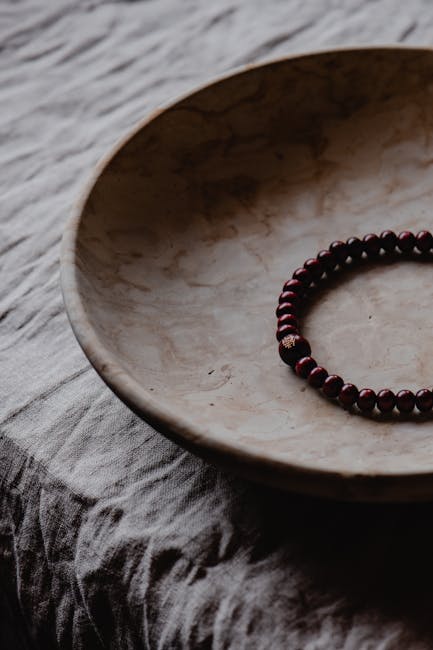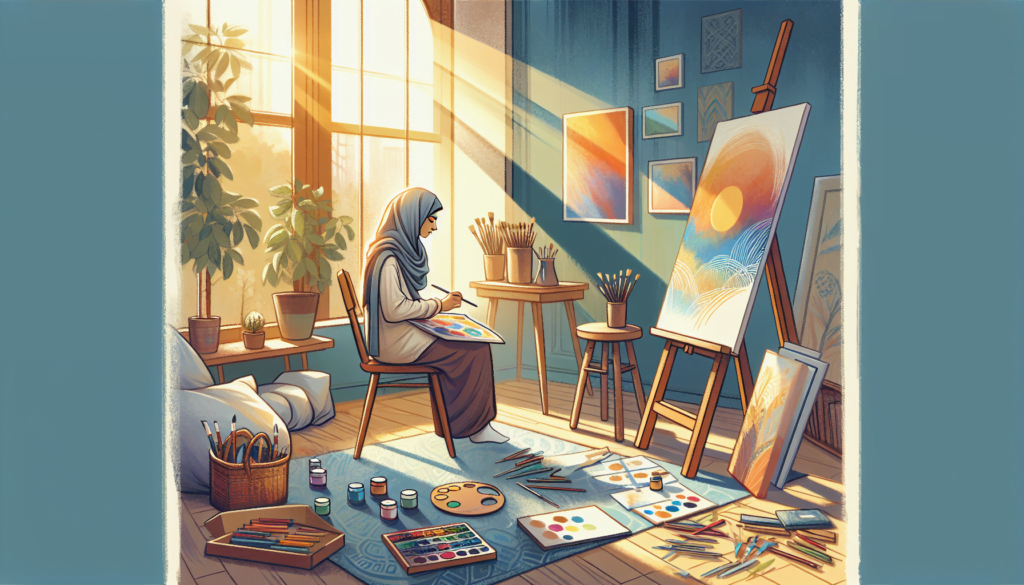Art therapy is a unique form of psychotherapy that uses the creative process of making art to improve a person’s physical, mental, and emotional well-being. It’s a tool that can help people explore their feelings, reconcile emotional conflicts, foster self-awareness, manage behavior and addictions, develop social skills, improve reality orientation, reduce anxiety, and increase self-esteem. So, if you’re curious about how art can be more than just a hobby and actually contribute to healing, keep reading to uncover the transformative power of art therapy.
Key Takeaways
- Art therapy is a therapeutic technique rooted in the idea that creative expression can foster healing and mental well-being.
- There are two main types of art therapy: active and passive.
- Art therapy can be particularly beneficial for dementia patients, helping with expression and communication.
- Scientific research supports the benefits of art therapy in reducing stress, anxiety, and depression, and improving self-esteem and social behavior.
- Clinical settings, including hospitals and mental health clinics, are increasingly incorporating art therapy into their treatment programs.
- Fine art has been shown to contribute to shorter hospital stays and a decreased need for pain medication.
- Regular exposure to art can enhance mental health and emotional well-being.
- Art-based meditation can be a powerful tool for mindfulness and stress reduction.
- Art advisors play a crucial role in selecting art for healing environments, creating spaces that support therapeutic goals.
Introduction to Art Therapy
Definition of Art Therapy
Art therapy is a form of expressive therapy that uses the creative process of making art to improve and enhance the physical, mental, and emotional well-being of individuals of all ages. It is based on the belief that the creative process involved in artistic self-expression helps people to resolve conflicts and problems, develop interpersonal skills, manage behavior, reduce stress, increase self-esteem and self-awareness, and achieve insight.
Primary Mode of Communication in Art Therapy
The primary mode of communication in art therapy is the creation of visual art, such as painting, drawing, sculpture, or collage. This non-verbal form of expression can be particularly powerful for those who find it difficult to articulate their feelings and thoughts with words.
The Healing and Life-Enhancing Nature of Art
Art has an inherent ability to heal and enhance life. It allows for personal expression, provides a sense of accomplishment, and can be a refuge from the intense emotions associated with illness or stress. The act of creating art can be a meditative and transformative experience, offering a way to communicate what may be too difficult to express with words.

The Two Types of Art Therapy
Active Art Therapy
Process of Creating Art
Active art therapy involves the process of creating art as a therapeutic practice. Participants engage in painting, sculpting, or drawing, among other art forms, to explore their emotions, develop self-awareness, cope with stress, boost self-esteem, and work on social skills.
Passive Art Therapy
Reflecting on Existing Art
Passive art therapy, on the other hand, involves the reflection on and interpretation of existing art. It can be used to help individuals understand themselves better and to convey their emotional state in a way that can be more easily communicated to others.

Treating Dementia through Art
Art Therapy for Dementia Patients
Means of Expression
Art therapy offers a valuable means of expression for dementia patients, who may struggle with verbal communication. Through creating art, they can express their thoughts and feelings in a way that’s accessible to them, providing a sense of control and accomplishment.
Communication Beyond Words
For those with dementia, art therapy facilitates communication beyond words, allowing them to maintain a level of social interaction and engagement with others, which is crucial for their overall well-being.

Scientific Evidence of the Benefits of Art
Reduction of Stress and Anxiety
Studies have shown that art therapy can lead to significant reductions in stress and anxiety levels. Engaging in the creative process can act as a distraction, allowing individuals to take a break from their worries and focus on the moment.
Improvement in Self-Esteem and Social Behavior
Art therapy has also been linked to improvements in self-esteem and social behavior. By providing a safe space to express oneself and receive positive feedback, individuals can build confidence and improve their interactions with others.
Impact on Depression
The impact of art therapy on depression has been a subject of research, with findings suggesting that it can help alleviate symptoms by providing a channel for expression and a way to work through difficult emotions.

Use of Art in Clinical Settings
Hospitals and Rehabilitation Centers
Processing Experiences
In hospitals and rehabilitation centers, art therapy is used to help patients process their experiences, cope with their medical conditions, and express feelings that might be difficult to verbalize.
Expressing Feelings
Patients are encouraged to use art as a means of expressing their feelings about their illness, treatment, and recovery, which can be an important part of the healing process.
Mental Health Clinics
Therapeutic Applications
Mental health clinics often use art therapy as part of their therapeutic applications, helping clients to explore their emotions, develop coping strategies, and work through trauma.

Fine Art as Good Medicine
Visual Art in Promoting Healing
Decrease in Pain Medication Need
Research has indicated that exposure to visual art can lead to a decrease in the need for pain medication and contribute to faster recovery times in patients.
Shorter Hospital Stays
Patients who engage with art during their hospital stay often experience shorter stays, suggesting that art can play a significant role in the healing process.

The Health Benefits of Surrounding Yourself with Art
Mental Health and Emotional Well-Being
Surrounding yourself with art can have a profound impact on your mental health and emotional well-being. It can serve as a source of comfort, inspiration, and reflection, contributing to a more balanced and fulfilling life.
Regular Exposure to Art
Regular exposure to art, whether through creating it or viewing it, can stimulate the mind, provide a sense of peace, and promote overall happiness.

Mindfulness and Meditation Through Art
Five Step Guide for Art-Based Meditation
Achieving a Meditative State
Art-based meditation involves focusing on the process of creating art as a form of mindfulness, which can help achieve a meditative state and the associated stress reduction benefits.
Stress Reduction Benefits
By concentrating on the act of making art, individuals can enter a flow state, reducing stress and promoting relaxation.
The Role of Art Advisors in Healing Environments
Selecting Art for Healing
Assistance by Art Advisors
Art advisors can play a crucial role in healing environments by selecting art that aligns with therapeutic goals and enhances the space for patients, staff, and visitors.
Creating a Therapeutic Environment
The right selection of art can transform a clinical setting into a therapeutic environment, promoting healing and well-being for everyone who enters the space.

Art therapy is a powerful tool in the healing process, offering a unique way to explore emotions, reduce stress, and promote well-being. Whether through active creation or passive reflection, art has the capacity to transform lives and aid in recovery. By incorporating art into our lives and clinical practices, we can tap into its therapeutic potential and enhance the healing journey for individuals facing a variety of challenges.
For those interested in exploring art therapy further, consider visiting pages on counseling and therapy, problem-solving therapy, interpersonal therapy, and learning how mindfulness and meditation can enhance emotional well-being. Additionally, practices like tai chi and meditation can complement the benefits of art therapy, offering a holistic approach to healing and self-discovery.
FAQ: How Does Art Therapy Contribute to Healing?
What is art therapy?
Art therapy is a form of psychotherapy that uses the creative process of making art to improve a person’s physical, mental, and emotional well-being. It allows individuals to express themselves through artistic expression, which can be particularly beneficial for those who find it difficult to convey their feelings with words.
Who can benefit from art therapy?
Art therapy can be beneficial for people of all ages, including children, adolescents, and adults. It is often used to help individuals who are dealing with emotional and psychological challenges such as anxiety, depression, trauma, chronic illness, and stress. It can also be supportive for those undergoing personal growth and self-discovery.
How does art therapy promote healing?
Art therapy promotes healing by providing a safe and non-judgmental space for individuals to explore their emotions and experiences. Through the creative process, people can express feelings that might be too difficult to verbalize, process traumatic events, and develop new perspectives and coping strategies. This can lead to a sense of relief, self-awareness, and emotional healing.
Do you need to be skilled in art to participate in art therapy?
No, art therapy is not about artistic talent or the aesthetic quality of the work produced. It focuses on the process of creation and the personal meaning of the art to the individual. People of all skill levels can engage in art therapy and benefit from its therapeutic properties.
What types of art materials are used in art therapy?
A wide range of art materials can be used in art therapy, including paint, clay, charcoal, pastels, pencils, and collage materials. The choice of materials often depends on the individual’s preferences and the therapeutic goals of the session. Art therapists are trained to select materials that will best support their clients’ expressive and healing processes.
Can art therapy be done individually or in groups?
Art therapy can be conducted in both individual and group settings. Individual sessions allow for personalized attention and a deep focus on personal issues, while group sessions provide opportunities for social interaction, shared experiences, and mutual support among participants.
What is the role of an art therapist?
An art therapist is a trained professional who guides individuals through the art therapy process. They provide a supportive environment, help clients explore their artwork, and facilitate the discussion of feelings and experiences that emerge. Art therapists are skilled in interpreting the non-verbal symbols and metaphors in the art, which can lead to insights and personal growth.
Is art therapy supported by research?
Yes, there is a growing body of research supporting the effectiveness of art therapy. Studies have shown that it can reduce symptoms of anxiety, depression, and stress, and improve quality of life for individuals with various mental health conditions and life challenges. Art therapy is recognized as a valuable complementary treatment alongside traditional therapies.
How does art therapy differ from traditional talk therapy?
Art therapy differs from traditional talk therapy in that it incorporates the creative process as a means of communication and expression. While talk therapy relies primarily on verbal communication, art therapy allows individuals to use visual and tactile forms of expression, which can access different parts of the brain and facilitate healing in unique ways.
How can someone find a qualified art therapist?
To find a qualified art therapist, individuals can search for professionals who are credentialed by recognized art therapy associations, such as the American Art Therapy Association (AATA) in the United States. These organizations often have directories of registered art therapists. It’s important to choose a therapist with proper training and credentials to ensure the best therapeutic experience.



